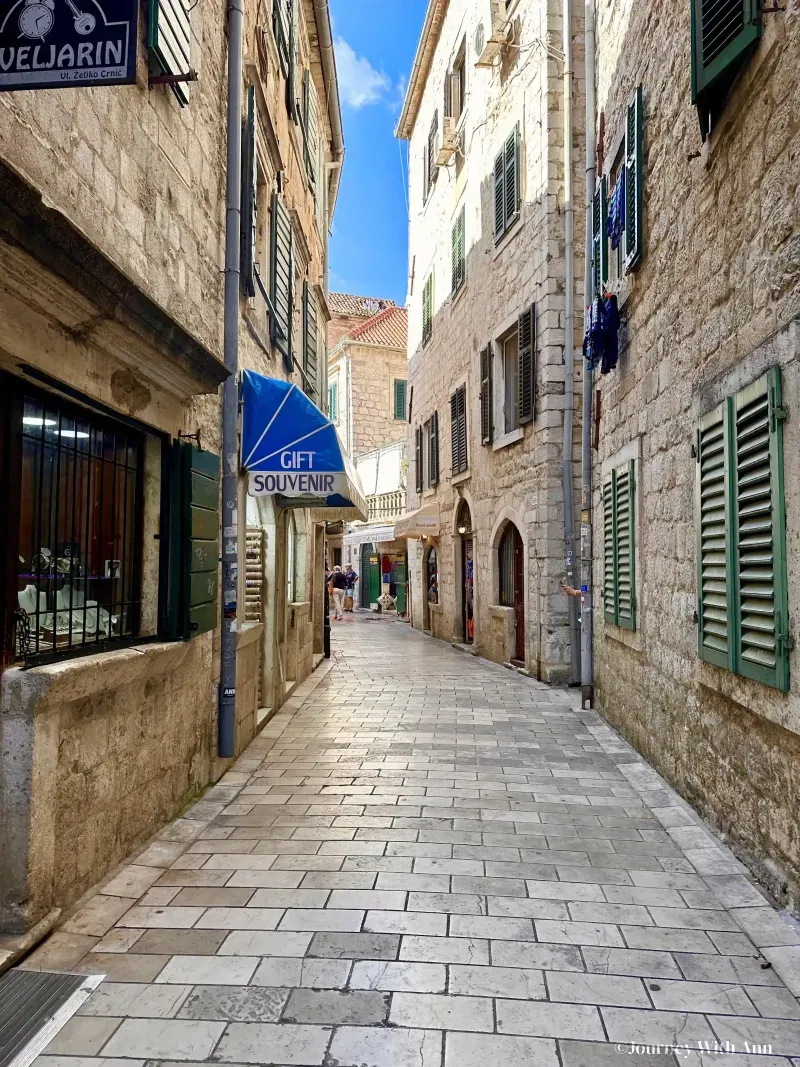The Stairway to History
The answer to this intriguing question is a staggering 1,350 stairs. The steps are quite large, making it often necessary to take two steps per stair for many people. The stairs are narrow, accommodating only one person at a time, frequently requiring one to let others pass by during ascents or descents. In some sections, there are no steps at all, just a sloped path paved with stones. These steps are part of the old fortress walls, leading to the San Giovanni Castle perched high above the town. The climb is not for the faint-hearted, but those who undertake this journey will be rewarded with breathtaking views of the Bay of Kotor, one of the most indented parts of the Adriatic Sea, creating a picturesque landscape that seems almost surreal in its beauty.


A note for everyone
For such a climb, comfortable clothing, shoes, a hat, and definitely bringing along water are essential. Of course, you can buy water, but only near the summit, which is quite high up, and be ready for it to cost significantly more than the usual price. It's crucial to rest, and a leisurely climb or descent will require about 1.5 hours or more, allowing time to rest, enjoy the views, and take photos.

Breathtaking Views from San Giovanni Castle
Reaching the top of the fortress is an achievement in itself. The panoramic view from San Giovanni Castle is unparalleled, offering a 360-degree vista of the bay, the old town, and the surrounding mountains. It's a perfect moment to reflect on the journey, the history, and the natural beauty that surrounds you. Just a little more, and the climb will be complete. Around this area, you’ll find vendors selling water in case you didn’t bring any with you.

More Than Just a Climb
Visiting Kotor and embarking on the climb up its historic steps is more than just a physical endeavor; it's a journey through time, offering insights into the area's rich history and cultural heritage. The blend of natural beauty, historical significance, and the sense of achievement in reaching the top makes this experience a must-do for travelers seeking adventure, history, and breathtaking views.

Traveler's Tip or HOW TO CLIMB THE FORTRESS IN KOTOR FOR FREE
Whether you're an avid hiker, a history enthusiast, or simply looking for a unique travel experience, the stairs of Kotor offer a compelling reason to visit. It's a place where you can challenge yourself physically while immersing yourself in the beauty and history of one of Montenegro's most enchanting towns. The stairs of Kotor are not just a pathway to a stunning viewpoint; they are a journey to the heart of Montenegro's soul. Traveler's Tip:
- Avoid using the free trails to climb the mountain – don’t put yourself or your loved ones at risk. I know the 15-euro fee might seem steep, but it’s not worth risking your life. Plus, the views from the free paths are not as impressive.
- Climbing in a group (with a tour guide, for example) won’t give you the full experience, as the hike is often limited to 20-30 minutes, whereas a self-guided ascent and descent takes 1.5 to 2 hours at a comfortable pace.
- The best time to visit is in the spring (from April to late May) or fall (September to October), as other times of the year can either be too hot or rainy, and the steps, made of slippery stone, become treacherous.



